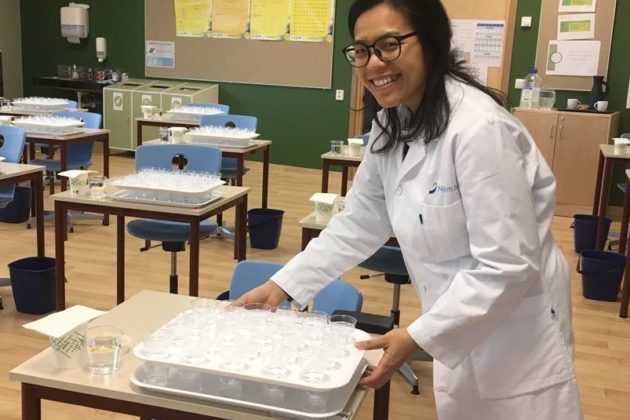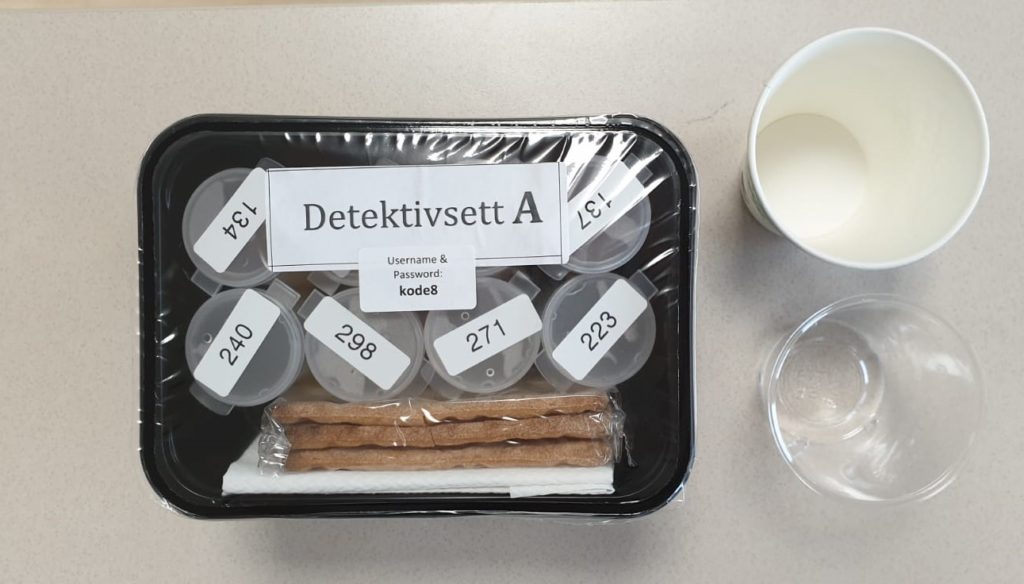Children prefer sweet and fatty foods

How intensely children experience taste does not appear to influence what food they like. Children like sweet and fatty foods best, while bitter or umami foods are liked the least.
These are among the findings in a doctoral thesis by Edulia PhD candidate, Ervina. She has investigated the relationship between taste sensitivity and food preferences in children aged 9-12.
At this age, children often start to make more independent food choices and sometimes buy their own food or snacks. They are also more influenced by friends and classmates, while parents have less influence.
People experience taste differently
There are five basic tastes – sweet, sour, salty, bitter, and umami. Ervina found that how children experience taste varies based on which foods and basic tastes are involved.
“Some children are very sensitive to bitter and sour tastes but do not experience sweetness as particularly intense. Other children, experience all five of the basic tastes intensely. Yet others experience the opposite; they are not particularly sensitive to any of the basic tastes. The experiences of taste intensity appear to be different for various food and drinks,” explains Ervina.
First, she mapped how intensely the children in the study experienced each basic taste. The children then tasted four variants of grapefruit juice with different degrees of sweetness and four variants of vegetable bouillon with different amounts of salt added. While the tests involving the vegetable bouillon variants produced no clear differences, the children responded very differently to the grapefruit juice.
“None of the children particularly liked grapefruit juice, although there were still differences. The children who were extra sensitive to all of the basic tastes thought that all of the grapefruit variants tasted okay. On the other hand, those who were not sensitive to any of the basic tastes thought the sweetest variant was okay, although the less sweet the less tasty they found it. Those least satisfied with the grapefruit juice were children who were sensitive to bitter and sour tastes but not to sweetness. However, it appears that the juice became a bit better with more sweetening,” explains Ervina.
Who likes fatty foods best?
The children also tested four different variants of milk. These were semi-skimmed milk 0.5%, semi-skimmed milk 1%, combination mix 2% and whole milk 3.5%. It turned out that the children who thought it was difficult to differentiate between the fat intensity in the various milk variants – preferred whole milk over the other milk variants.
“This indicates that the ability to sense the taste of fat influences what children like and eat. Children who like fattier food have a low ‘fat sensitivity’”, says Ervina.
Other findings from the tests indicate that on average girls are more taste sensitive than boys and that the differences are greatest for sweet and bitter tastes.
About the disputation
Ervina defended her thesis on 19 November. It is titled “Taste sensitivity and food liking in preadolescent children”.
Her main supervisor was Senior Scientist Valérie Almli of Nofima, who is also an associate professor at the Norwegian University of Life Sciences (NMBU). Other supervisors were Scientist Ingunn Berget of Nofima, Professor Siv Borghild Skeie, NMBU, and Associate Professor Caterina Dinnella of the University of Florence, Italy.
The first opponent was Associate Professor Annemarie Olsen of the University of Copenhagen, Denmark. The second opponent was Professor Gaëlle Arvisenet of AgroSup Dijon – National Superior Institute of Agronomic Sciences, Food and the Environment, France. The committee coordinator was Associate Professor Davide Porcellato of NMBU.
Children became taste detectives
Ervina conducted numerous different tests to map their taste sensitivity and how the children reacted to different basic tastes and the taste of fat. In total, more than 250 children aged 9-12 took part in the tests.
“These tests took quite a long time because the children had to taste and judge many different variants of the various samples. I developed a digital taste detective game to engage and retain the children’s attention and concentration. It worked very well,” says Ervina.
In the game, the goal was to identify and sense the differences between both basic tastes and basic taste or fat concentration. The children tasted water solutions with five different levels of concentrated basic tastes. They drank different types of milk. They tasted grapefruit juice with four different levels of sweetness and vegetable bouillon with different quantities of salt. In total, Ervina and her colleagues served more than 8,000 taste samples in the tests.
“Ervina’s research sheds light on a little-studied age group. She has developed new knowledge about individual differences and taste sensitivity’s role in children’s food habits. She has also developed valuable age-appropriate research methods, both for in-person meetings with children and for digital meetings subject to pandemic restrictions,” says Senior Scientist Valérie Almli of Nofima. She has been Ervina’s main supervisor.

Publications
About the research
The research was conducted as part of Edulia, a Marie Skłodowska-Curie ITN project, funded by the EU. The project started in 2018 and concluded in 2022.
Edulia is a global, multidisciplinary and intersectoral European training and research network that trains 11 young researchers across research fields. The common objective is to produce healthier eating habits in children and young people. Despite the pandemic, 11 PhD candidates completed their projects and research within the planned timeframes. You can read more about the project and its many useful research results on https://Edulia.eu
Contact persons
Topics
Children and food

